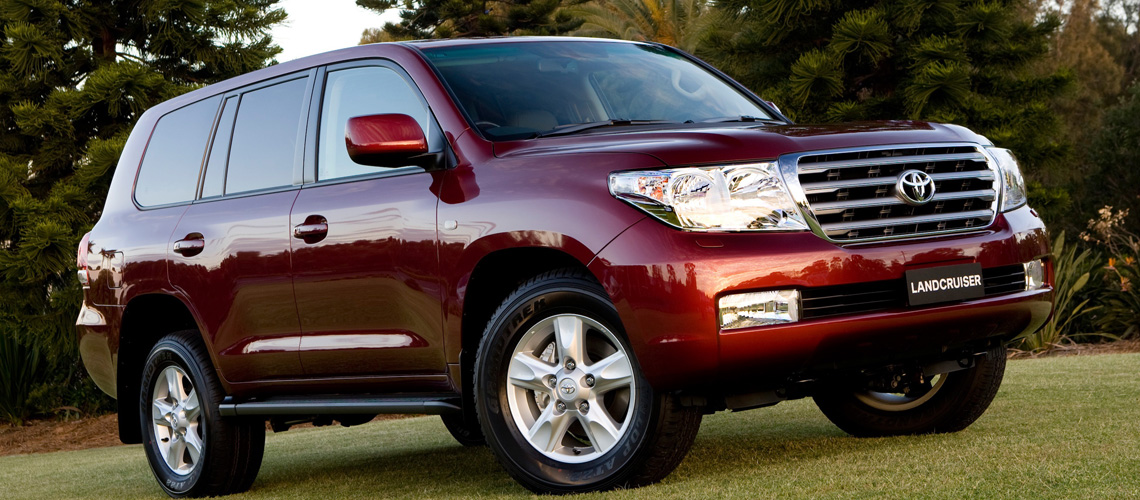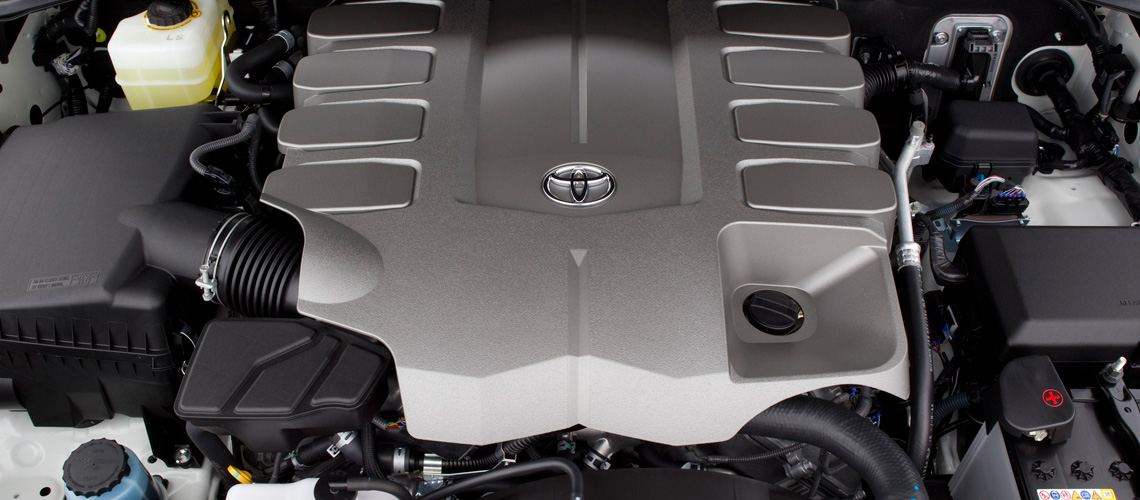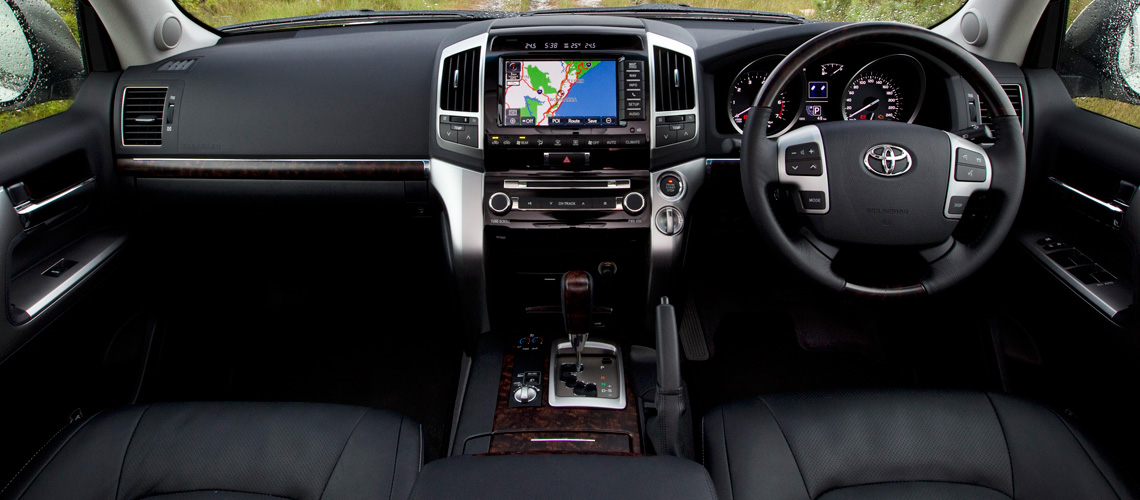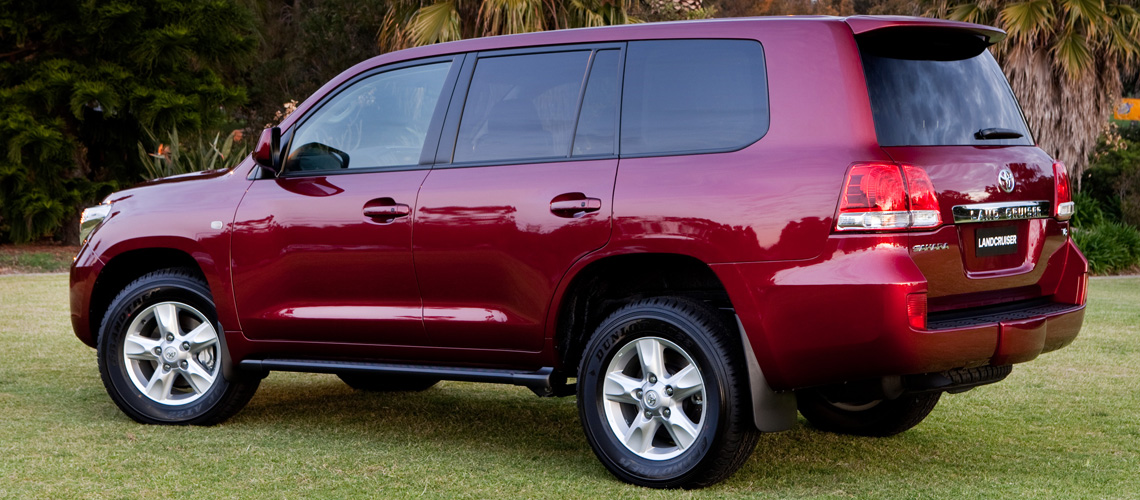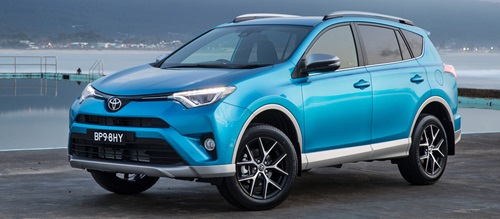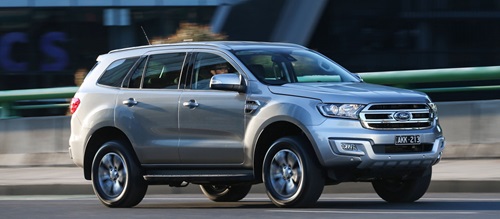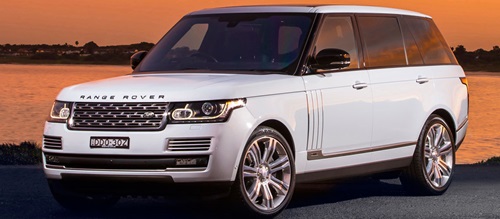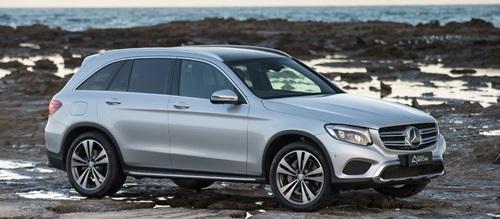Snapshot |
|
| Priced from | $69,990 |
| Engine | 4.5L V8 |
| Transmission | 6-speed auto |
| Fuel Economy |
10.3
AVG
|
| Output | 195kW/650Nm |
| ANCAP rating |
|
Toyota's big LandCruiser gets even bigger for 2008, with the highlight of the new 200 Series being a superb new 4.5 litre turbodiesel V8 engine.
Value for money
Pricing
The 200 Series base 4.7-litre V8 petrol GXL costs $69,990, the VX is $79,990 and the Sahara is $94,990. Turbo diesel V8 variants each cost an extra $10,000.
Warranty
Three years/100,000 kilometres.
Standard equipment
All LandCruiser 200 models have eight seats, 17-inch alloy wheels including spare wheel, automatic air conditioning, six airbags, stability control and keyless entry and starting. VX adds driver and front passenger knee airbags, second-row seat side airbags, tinted glass, front foglamps, side steps, remote power windows and sunroof, trip computer, illuminated instruments, leather seat trim, leather-bound steering wheel and gearshift lever, power-adjustable front seats, and an alarm system.
Sahara has a reversing camera, satellite DVD navigation with six CD/DVD/MP3 changer and nine-speaker audio, four-zone automatic air conditioning, cool box, power tilt and telescopic steering column, electric folding exterior mirrors, headlamp cleaning system, wood and leather gear shift lever, steering wheel with audio controls and an electro-chromatic interior mirror.
Retained value
This depends upon whether you choose the diesel or petrol engine. The 100 Series GXL 4.2 litre six cylinder turbo diesel's three year resale value holds up strongly at around 56 per cent, but its 4.7 litre V8 equivalent is around 51 per cent, according to Redbook. Anecdotal evidence suggests that the difference may be greater than that.
Design and function
Ergonomics
Toyota does the most efficient, user friendly dash layouts in the business. Highlights here include the permanently illuminated instruments, intuitive touch screen operation in the Sahara, a centre console storage box that's bigger than some car boots (with chilling in the Sahara), front/side sunvisors and big, clearly marked buttons and switches. Less appealing are separate rake and reach levers for steering wheel adjustment on the GXL, the absence of seat height adjustment on GXL, and the absence of a rear camera until you get to the Sahara.
Toyota doesn't like putting controls on the steering wheel, but a duplicate set of basic audio controls would be handy. Selecting high or low range no longer requires you to reach down for an argument with the previous model's stubby, often recalcitrant lever; a simple rotary switch on the dash and electronics now take care of this task. Vision is fine in all directions - you sit above nearly everyone else - but a camera should be standard across the range.
Technical details
-
The 200 Series LandCruiser has a larger, stronger, stiffer separate box section steel frame chassis. It's slightly longer and wider than the previous model.
-
The 4.5 litre direct injection twin turbo-diesel engine produces 195kW of power at 3400rpm and 650Nm of torque from 1600-2600rpm.
It's matched with a six -peed sequential automatic. The 4.7 litre V8 is carried over, with improvements lifting power to 202kW at 5400rpm. Torque is 410Nm at 3400. A five-speed automatic is standard with this engine.
-
High and low range are now selected electronically, via a switch on the dash. A Torsen centre differential varies the front/rear troque split depending upon conditions and wheel grip. It can be locked.
-
Front suspension is new double wishbone/coil spring; rear suspension is live axle/coil spring. A new Australian designed Kinetic Dynamic Suspension System - KDSS - is standard on all models except the GXL turbo diesel, where it adds $2600. KDSS uses linked hydraulic cylinders on both stabiliser bars to counteract body roll when cornering. When wheel articulation occurs, as in off road driving, the cylinders exert no pressure on the stabiliser bars, allowing full suspension stroke.
-
Petrol models have crawl control, which allows low speed, feet off traversing of very rough terrain. Hill descent control is fitted to turbo diesel models.
-
Brakes include ABS with a variable slip ratio for optimum performance on a range of road surfaces.
-
All petrol variants, and the GXL turbodiesel, have 138 litres of fuel capacity; VX and Sahara turbo diesel have 93.
285/65 Dunlop Grandtrek tyres are fitted.
-
Ground clearance is 225mm.
-
Kerb weight is 2555-2720; GVM is 3300kg; GCM is 6800kg and maximum towing capacity is 3500kg.







